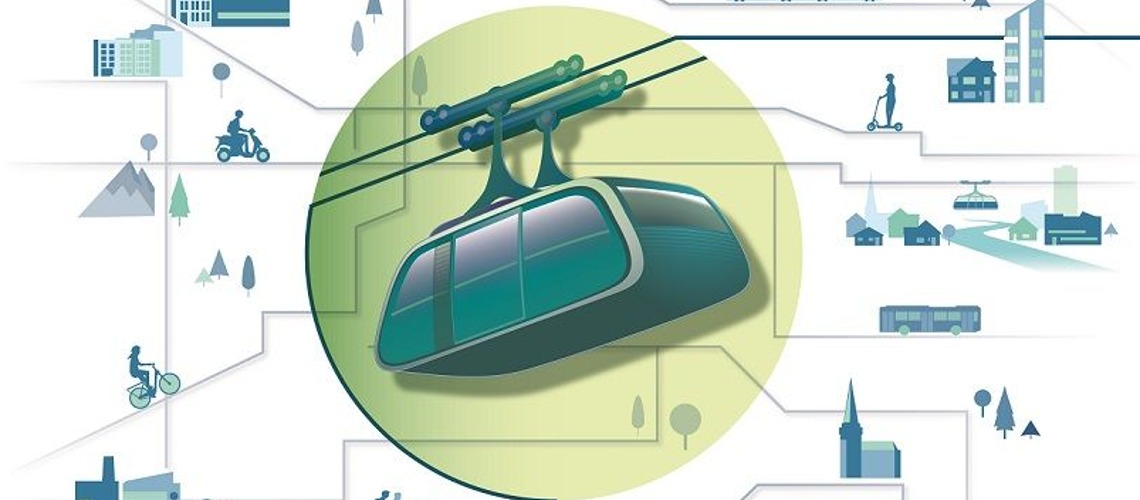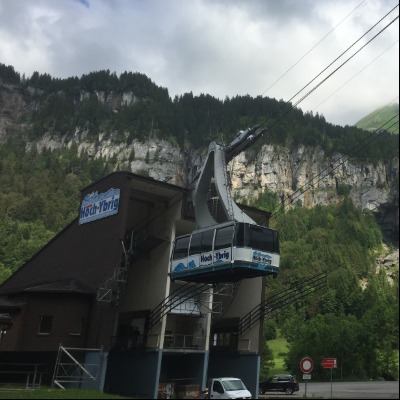BMDV Germany: Urban Cable Cars - Climate-Friendly, Inexpensive, Reliable

With the "Urban cable cars in local public transport" guide published on November 30, 2022, the BMDV supports municipalities or municipal transport companies in the implementation - from the project idea to planning and construction to operation.
The guidelines are intended to promote cable cars as a sustainable mobility option in urban areas. The aim is to create a national standard for urban ropeways in Germany that cities and municipalities can use as a guide. Because in Germany there has so far been little experience with cable car systems in urban areas.
Sebastian Beck, Drees & Sommer SE / co-author of the guide: "Especially in larger cities, roads and local public transport are reaching their limits or have long since exceeded their limits. In view of increasing traffic jams, noise and emissions, the cable car is also appearing more and more on the radar screens of traffic planners in Germany as a means of urban local transport. Although there is no patent recipe for an urban cable car system, since the infrastructure, traffic volume or topography are different in every city, the guide provides valuable guidance on where using a cable car is worthwhile and what it can do in public transport. With the guideline, German cities and municipalities receive well-founded information on how cable car projects can be integrated in a meaningful way in terms of urban and traffic planning and how the acceptance of this means of transport can be increased among the population."
Why urban cable cars?
- Urban ropeways are innovative and environmentally friendly transport systems.
- For example, you can close gaps in traffic, expand and supplement existing public transport systems or relieve congested traffic routes. However, the main application is bridging and overcoming topographical, structural or traffic obstacles.
- Numerous cities across Germany are currently considering the construction of urban cable car systems.
What are the advantages?
- Compared to other transport systems, cable cars are climate-friendly, inexpensive, quick to implement and reliable.
- If the cabins run in circulation, there is no need for a timetable.
- Cable cars save space and always have free travel. There are no obstacles for them.
- They have been tried and tested as a result of experience in winter operation in mountain regions and are considered to be extremely robust and largely independent of the weather.
How does the BMDV support?
- In 2019, the BMDV set up the Urban Cable Cars working group to discuss federal support options with representatives from municipalities, federal states and science. Where are the opportunities? Where's the potential? Where are the difficulties or obstacles? This working group has met regularly ever since.
- On November 30, 2022, the BMDV published the “Urban cable cars in public transport” guideline, which was drawn up together with the Stuttgart planning and consulting company Drees & Sommer SE and the Transport Research Institute Stuttgart GmbH (VWI).
- He analyzes:
- the urban and traffic planning integration of urban cable car projects
- already existing international urban ropeway projects,
- the status of planning and experiences in Germany,
- Results of the workshops with municipal representatives and citizens under the aspects of traffic, urban planning, environment and citizen participation
- It includes:
- General basics (e.g. fields of application, ropeway systems, legal framework),
- an exemplary project process, which can be used as a guide for the implementation of cable car projects
- the areas of transport, environment and urban integration,
- the technical infrastructure and operation
- Evaluation, Investment and Promotion
Does the BMDV also provide financial support?
- With the most recent revision of the law on municipal transport financing (GVFG; federal funding for local transport infrastructure), the BMDV has included cable cars as eligible projects. Cable car projects with a minimum project size of 30 million euros are eligible for funding with up to 75% of the eligible costs within the framework of the GVFG federal program. The funding of the project must be in accordance with the state aid law of the European Union. This requires a discussion on a case-by-case basis.
- Investment in the construction or expansion of a cable car system must be preceded by an overall economic assessment in order to be supported by federal financial aid. The corresponding proof of profitability is to be provided according to the nationwide uniform calculation method of the standardized assessment. With the new version (2016+) of the standardized assessment published in 2022, the comprehensive presentation of the social, traffic and macroeconomic benefits of public transport projects, including for urban cable cars, is made significantly easier. It is the new basis for proportionate federal funding as proof of economic efficiency according to the Municipal Transport Financing Act (GVFG).













